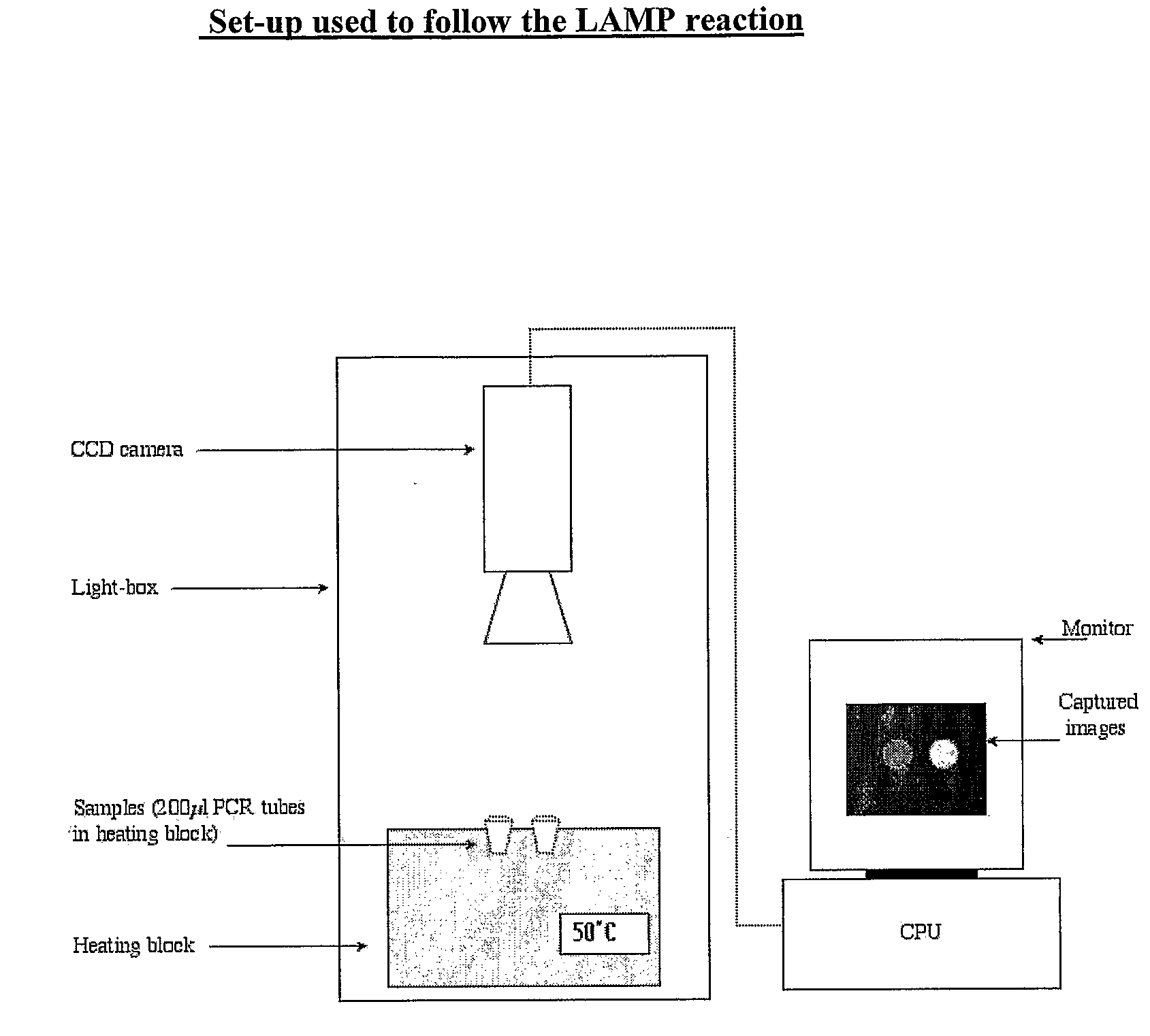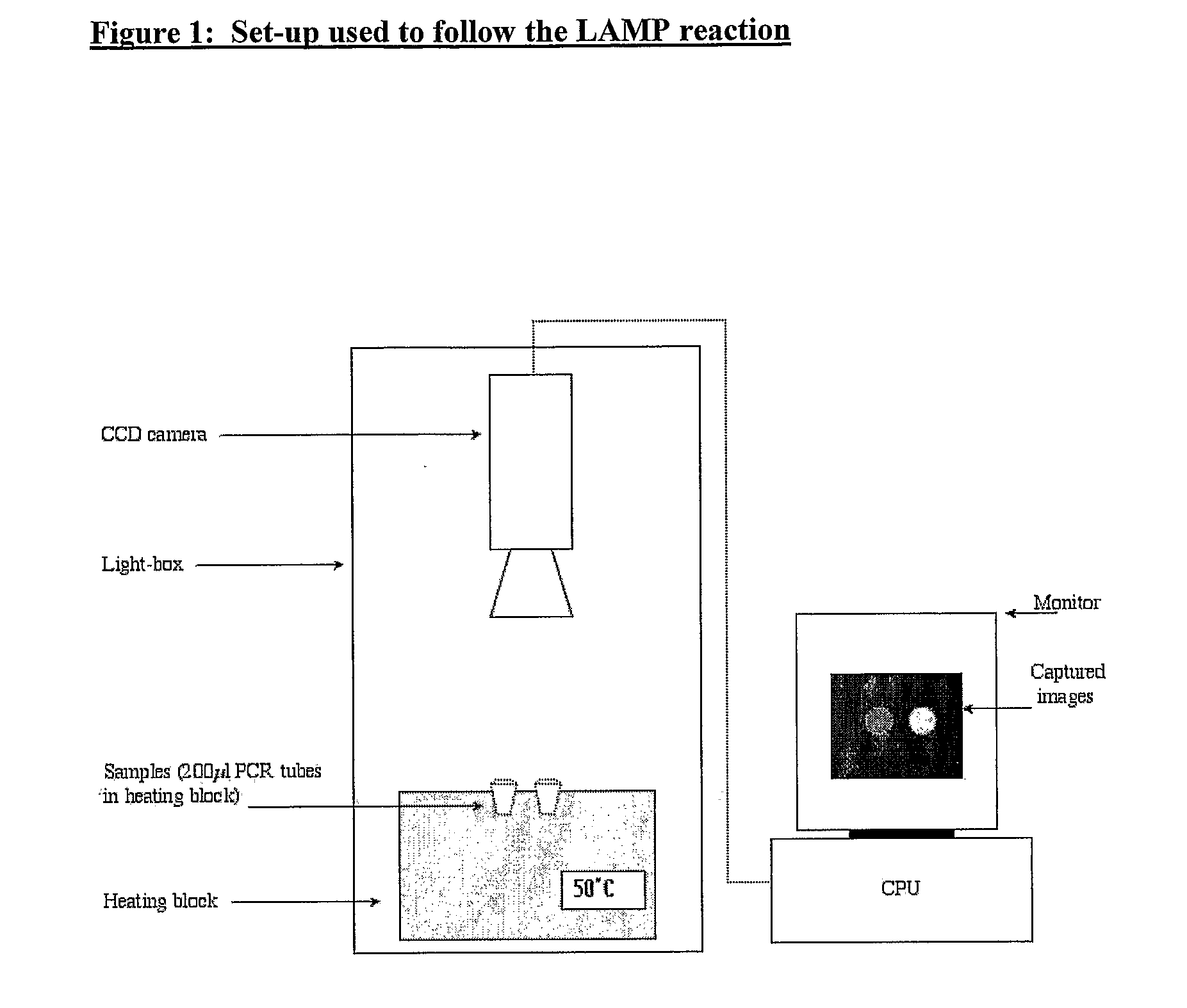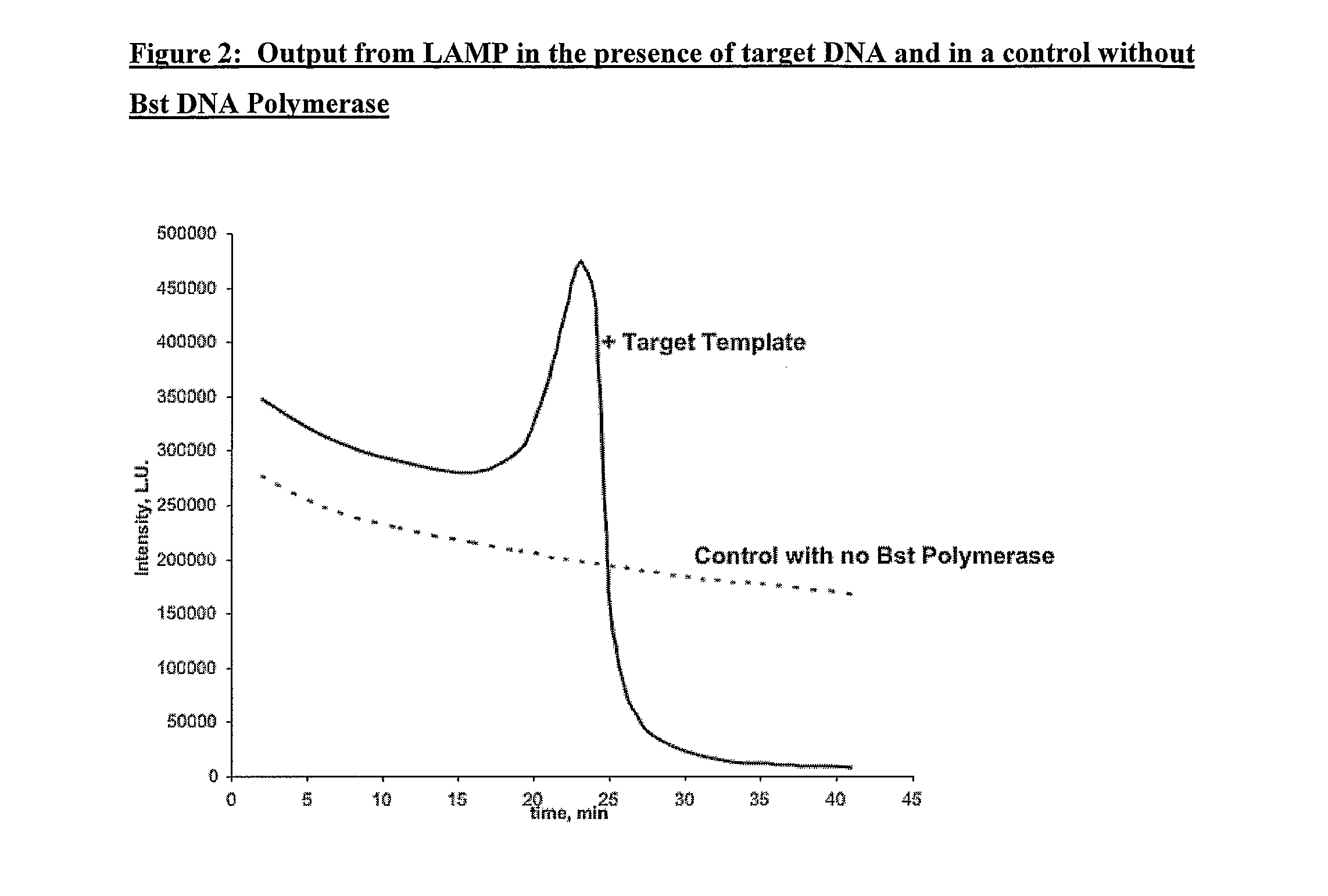Method for Determining the Amount of Template Nucleic Acid Present in a Sample
a nucleic acid and sample technology, applied in the field of determining the amount of template nucleic acid present in a sample, can solve the problems of contamination of the sample, time-consuming, and laborious, and achieve the effects of reducing the overall intensity of light, increasing the intensity of light output, and slowing down the amplification reaction
- Summary
- Abstract
- Description
- Claims
- Application Information
AI Technical Summary
Benefits of technology
Problems solved by technology
Method used
Image
Examples
example 1
Demonstration of a Method of the Present Invention
[0132]The isothermal nucleic acid amplification reaction known as Loop-Mediated Amplification (LAMP) was selected to exemplify the potential for using a simple bioluminescent assay to follow nucleic acid amplification in real-time.
[0133]The present, most rapid manifestation of the LAMP method uses six primers. This manifestation has been demonstrated to detect 105 copies of target DNA in just 15 minutes (Nagamine et al. 2002 Molecular and Cellular Probes, 16, p 223-229). LAMP reactions normally run at 60-65° C. and require at least 4 mM of Magnesium ions.
[0134]In order to demonstrate a real-time bioluminescent output from a LAMP reaction in particular, it was necessary to find means to lower the temperature at which the LAMP reaction runs. This is due to the fact that at temperatures as high as 65° C. even the most thermostable beetle luciferase known to date (the Ultra-Glow thermostable luciferase from Promega) is not sufficiently a...
example 2
Reproducibility of the Method of the Invention Using a LAMP Amplification Reaction
[0153]The same procedure was carried out as in example 1 except that multiple samples were used to assess the reproducibility of results obtained in the LAMP reaction.
Starting Materials and Methods
[0154]As for example 1 except the sample and control were performed in duplicate or triplicate and the temperature of the reaction was raised to 55° C.
Results
[0155]The results are shown in FIG. 3. The same progress of the sample curve as in Example 1 is seen in this case.
[0156]In this example both the rate of change of light emission and the time to maximal light emission are extremely similar for both of the samples. Again, generation of amplified DNA in the samples was confirmed by agarose gel electrophoresis. For the controls, whilst the rate of change of light emission for both cases are similar, there is a small difference in absolute value. Again, this is thought to be because of the effects associated ...
example 3
Use of a Method of the Invention in a Quantitative Fashion
Starting Materials and Methods
[0158]The same procedure outlined in example 1 was repeated but with different amounts of target DNA in the samples. Duplicate samples were set up containing a total of either 0.4 ng, 40 pg, 4 pg or 0.4 pg of template nucleic acid. The temperature of the LAMP reaction was 55° C.
Results
[0159]The resulting light emission profiles for each of the samples is shown in FIG. 5. The results obtained in FIG. 5 demonstrate a key property of methods of the invention. Whilst there is not a convincing correlation between the amount of target template and absolute light emission, there is a clear relationship between the time to peak light emission or the time to changes in the rate of change of light emission.
[0160]A plot of time to peak light emission against amount of target DNA demonstrates that the correlation is quantitative (see FIG. 6a in which the time to peak light emission has a linear correlation w...
PUM
| Property | Measurement | Unit |
|---|---|---|
| cycling temperature | aaaaa | aaaaa |
| temperature | aaaaa | aaaaa |
| temperatures | aaaaa | aaaaa |
Abstract
Description
Claims
Application Information
 Login to View More
Login to View More - R&D
- Intellectual Property
- Life Sciences
- Materials
- Tech Scout
- Unparalleled Data Quality
- Higher Quality Content
- 60% Fewer Hallucinations
Browse by: Latest US Patents, China's latest patents, Technical Efficacy Thesaurus, Application Domain, Technology Topic, Popular Technical Reports.
© 2025 PatSnap. All rights reserved.Legal|Privacy policy|Modern Slavery Act Transparency Statement|Sitemap|About US| Contact US: help@patsnap.com



